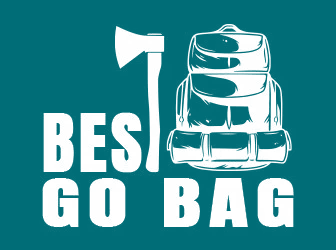The United States of America is No. 1 in the world in many categories. Including technological innovation, medical research, and robotics. Plus aerospace, aviation, and charitable giving. And many more.
Unfortunately, we lead the world in tornadoes too. With an average of about 1,200 per year. America also experiences the most destructive and deadliest tornadoes around the globe.
The deadliest tornado outbreak in U.S. history occurred in March 1925 in Missouri, Illinois, and Indiana when 695 people lost their lives. More recently, 158 died from the 2011 tornado in Joplin, Missouri.
Already in 2023, there have been 450 confirmed tornadoes and 64 related deaths. Twenty-six of those deaths occurred in the late March tornado outbreak in Mississippi, Alabama, and Tennessee.
Devastating storms show no mercy
In a moment I’m going to provide you with advice on what to do when a tornado is approaching. But first, let’s take a look at exactly what a tornado is.
These vicious storms, which are violently rotating columns of air in contact with the earth’s surface, are more than a match for pretty much everything that gets in their way. Including homes and other structures, trees, and power lines.
While most tornadoes are approximately 250 feet across and feature wind speeds of less than 110 miles per hour, some particularly intense tornadoes stretch out across two miles and pack 300 mph or greater wind speeds.
Your safest bet when a tornado strikes is to put yourself in the best possible position to avoid the storm. However, you don’t have to wait for an actual tornado to come roaring at you to practice dodging it.
Activate your response plan
There are a variety of actions you can take now to protect yourself and your family before, during, and after a tornado touches down.
First and foremost – and this applies to any potential weather-related disaster – you should make sure to have an emergency response plan in place, just in case a tornado warning is issued.
Whether you are at home or at the office, everyone should be aware of exactly what to do and where to take shelter.
Tornado warning signs include rapidly darkening skies, clouds rotating in a circular pattern, a funnel cloud being spotted, and sometimes a rushing or roaring noise being heard. Of course, keeping a TV or radio tuned to a station that will provide weather updates is very important.
5 steps to stay safe
If conditions are right for a tornado to develop, a tornado watch will be issued and it’s wise to pay very close attention to your surroundings. If a tornado warning is proclaimed, that means a tornado has been spotted in your area and you should seek shelter immediately.
As soon as possible, tune into emergency radio communicated by the National Oceanic and Atmospheric Administration. Their reports will always be slightly ahead of mainstream media reports.
Offering five steps to take during a tornado is Ready.gov. They are:
- If you’re indoors, get to a basement, storm cellar, or the lowest level of a building. Stay away from windows, doors, corners of buildings, and outside walls.
- If you’re indoors but can’t get to a lower level, find the smallest interior room or hallway as far from the exterior of the building as possible.
- If you’re driving, try to head to the closest structure where you can take shelter.
- If you’re driving but can’t get to a shelter, get out of the car and lie face down with your hands over your head in a ditch or other lower level near the roadway but away from vehicles.
- If you’re driving and you see a tornado, don’t try to outrun it. Pull over immediately and seek shelter. Avoid overpasses, bridges, tall buildings, and flying debris.
Emergency kit must-have’s
Sometimes people become trapped in a basement, closet, or other small room in their home after a tornado has damaged their home. That’s why it’s important to take your emergency kit with you when you hunker down for a storm. Among the items you should include in this kit are:
- Non-perishable food and water
- Cellphone
- Flashlight
- Prescription medications
- First-aid kit & hygiene items
- Emergency weather radio
- Fully-charged portable power bank
- Blanket & pillow
- Personal water filter
- N-95 masks
- Books, games, puzzles
Once a tornado passes and you can leave your home, you may not be out of the woods yet. Most people who suffer post-tornado injuries get hurt trying to clean up debris, including glass and nails. Also keep an eye out for downed power lines, ruptured gas lines, and damaged structures.
Tornadoes destroy everything in their path. But like every other emergency situation, the better prepared you are, the greater the odds that you will survive.


